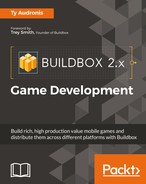Well, there we have it! A complete game, adjusted and compiled for distribution channels, and live so that people can download and play it. A lot of work, and a lot of nuances and complexity in this chapter. Hopefully, you now know how various distribution channels work and their commonalities so that you can easily navigate through any new channels that may pop up as well.
In this chapter, we learned all about distribution channels. We dealt with all of the complexity of compiling, preparing, and submitting for the Apple iOS store (iTunes). We also breezed through Google Play, and the slightly more difficult Amazon App Store. We then moved into PC gaming with the Windows store, and even covered Steam. If this chapter took you the longest to get through, don't worry. The entire process of submitting Ramblin' Rover to all of these channels took over three weeks to complete (when the game itself took less time to create).
But consider this... Buildbox has done such a great job of making game creation easy, that the hardest part of getting your game out to players is actually distributing it! As we covered in our introduction to Buildbox, this is what makes it revolutionary. This is what makes Buildbox a great tool for creating simple games very quickly. Now, if only distribution channels would streamline their processes a bit more, right?
Starting in the next chapter, we're going to wind down our pace a bit. We'll be covering how the process of building a game will be a bit different for some of the other types of game presets within Buildbox. We'll also cover making entirely new types of game (such as the popular mobile game Color Switch - made with Buildbox). We'll even get into some of the principles of making Isometric (2.5d) games.
Ready? Let's go!
